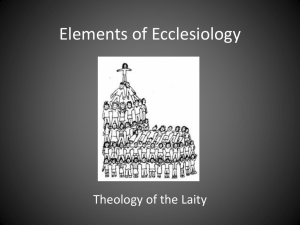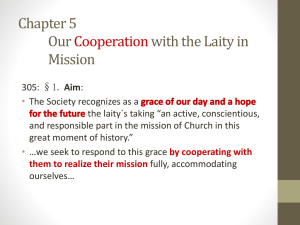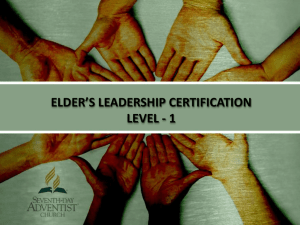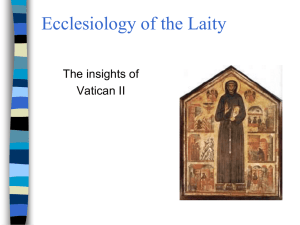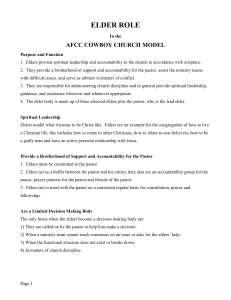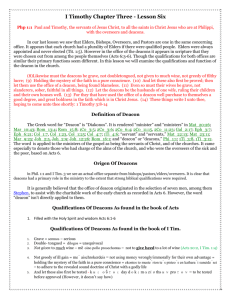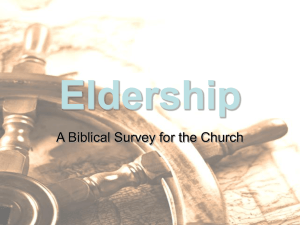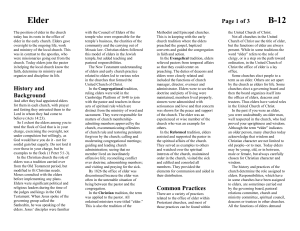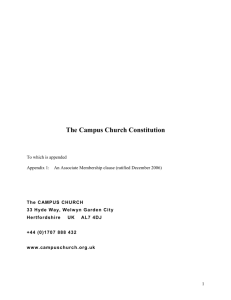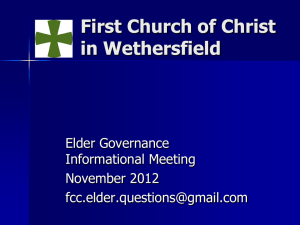Church Government - Community Chapel of Greenville
advertisement
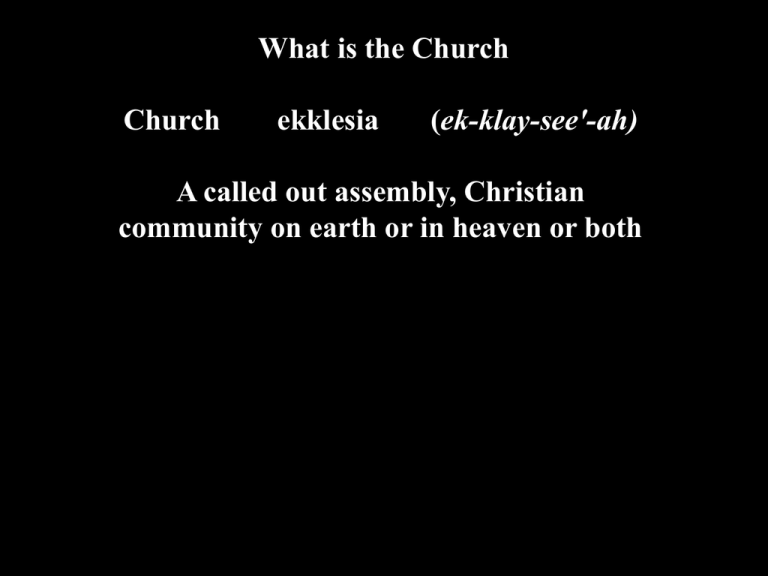
What is the Church Church ekklesia (ek-klay-see'-ah) A called out assembly, Christian community on earth or in heaven or both What is the Church Invisible Mystical Christianity Visible Organizational Christianity Body of Christ Members The Visible Church or Organizational Christianity Assembly of professing believers in the Lord Jesus Christ who have been baptized and who are organized to accomplish the Lord’s will. 1 – Those who make a profession of faith in Christ 2 – Those who have submitted to believers Baptism 3 – Those who have been organized according to scripture 4 – Those who assemble to do the Lord’s will Leadership Offices in the NT Church Deacons diakonos (dee-ak-on-os) To be an attendant, that is, wait upon, technically to act as a Christian deacon 1Tim 3:8-10 Elders presbuteros (pres-boo-ter-os) Specifically an Israelite Sanhedrist, or Christian “presbyter” elder 1Tim 5:17-20 1Peter 5:1,5 Bishop episkopos (ep-is-kop-os) A superintendent, that is, Christian officer in general charge of a (or the) church (literally or figuratively) bishop, overseer. Phil 1:1 1Tim3:1-2 Titus 1:7 Historical forms of Church Government 1 – Minimal Government 2 – National Church 3 - Episcopal or Hierarchical Government 4 – Presbyterian or Federal Government 5 – Congregational Government 6 – Elder form of Government 7 – Senior Pastor form of Government 1 – Minimal Government Prominence on the headship of Christ, organization is at a minimum, led by small group of Elders, no single minister, emphasis on the spiritual gifts, privileges, and rights of all members. Christ the Head Elders, Laity 2 – National Church Organization of Churches under the head of state which exercises a considerable amount of control over the Church. Examples are Anglican Church of England, Lutheran Church of Germany Christ the Head State Head Bishops Elders Deacons Laity 3 - Episcopal or Hierarchical Government (Bishops / Episkopos) In the Hierarchical system the ruling body is made up of the clergy organized into orders or ranks, each being subordinate to the one above it which are in Apostolic succession. Episcopal Church Christ the Head Bishops Elders Roman Catholic Church Christ the Head Pope College of Cardinals Deacons Bishops Laity Priests Laity 4 – Presbyterian or Federal Government (Elder / Presbuteros) In this system the church is led by a representative form of Government Examples Presbyterian and Reformed Churches Christ the Head General Assembly (High Court) Synod (Distric Court) Presbytery (Representitives of session) Session (Pastor/Elders) Laity 5 – Congregational Government Authority for governing rests with the members, each Church is autonomous officers of the church are elected by the members. Example of this model is the Baptist. Christ the Head Laity/Elders/Decons 6 – Elder form of Government (modified Epsicopal) In this system the pastor is a fellow elder ruling with the board of elders. Elders may be appointed by the current elder board or elected by the members. The deacon board is subordinate to the elder board. Several independent churches use this system Christ the Head Elders Board Deacon Board Laity 7 – Senior Pastor form of Government (modified Epsicopal) This system the Pastor is ruled over by the Lord and recognized by the congregation as God’s instrument to lead the church. The Senior Pastor is assisted by the elders and deacons with the church being autonomous. This system is popular with independent and community churches. Christ the Head Senior Pastor Elders/Deacons Laity
